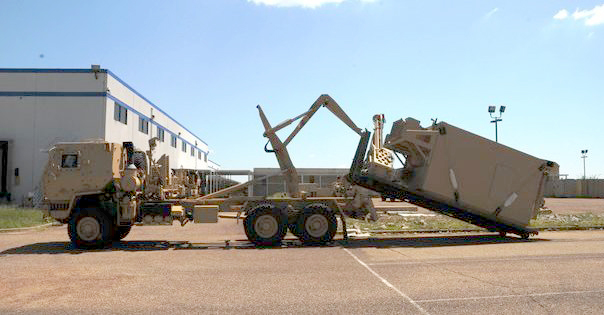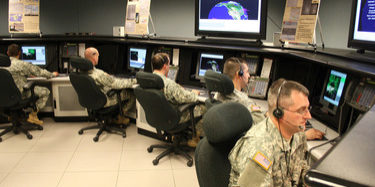System & Software Engineering
We apply disciplined, systems engineering processes across the entire development life cycle of every project we support. Our Engineers have experience and expertise with:
- Requirements Definition and Management
- Architecture Definition
- Analysis and Design
- Implementation
- Integration and Test
We provide exceptional system and software engineering services for several advanced weapon system programs, including:
Project
Integrated Air and Missile Defense Battle Command System (IBCS)
Customer
United States Army
Project
Integrated Air and Missile Defense Battle Command System (IBCS)
Customer
United States Army

The Integrated Air and Missile Defense Battle Command System (IBCS) is the future command and control system for U.S. Army air defense assets. It is intended is to integrate the communications between weapon launchers, radars, and the operators, allowing an air defense unit, such as a Patriot battery, to fire its interceptors using information provided by the radar of another. 1 In some cases, this integration will permit an Army air defense unit to defend a larger area, as the unit’s engagement zone will be less limited by the view of its own organic radar. It will also reduce the chance of interceptor wastage, by reducing the chance that two or more air defense units will engage the same target. Once deployed, IBCS will take the place of seven other Army command and control systems currently in use.
IBCS Testing
The system has been used in a number of tests beginning in May 2015. In a test conducted on April 8, 2016, IBCS operated against dual threats, a cruise and ballistic missile. It displayed its intended capability by linking sensors from one defense system to interceptors from another, defeating both incoming missiles.

Software Development
Mission Control
- Created Microservices /Event-Bus architecture to define new V4.5 architecture for MC SW
- Engagement Operations
Mission Support
Common Warfighter Machine Interface (CWMI)
Requirements development
Embedded training
Modeling & Simulation
- global Engagement Modeling (GEM)
- Robustness analysis and domain modeling
Project
Terminal High Altitude Area Defense (THAAD)
Customer
Missile Defense Agency (MDA)

Terminal High Altitude Area Defense (THAAD) is a transportable system that intercepts ballistic missiles inside or outside the atmosphere during their final, or terminal, phase of flight. THAAD uses a one-stage hit-to-kill interceptor to destroy incoming ballistic missile targets. THAAD is able to intercept incoming missiles both inside and just outside of the Earth’s atmosphere at a range of 200 kilometers, which mitigates the effects of weapons of mass destruction before they reach the ground. The ability to intercept both inside and outside the atmosphere makes THAAD an important part of layered missile defense concepts, as it falls between the exclusively exo-atmospheric Aegis interceptors and the exclusively endo-atmospheric Patriot interceptors.
There are four main components to THAAD: the launcher, interceptors, radar, and fire control. The launcher is mounted on a truck for mobility and storability. There are eight interceptors per launcher. Current Army configurations of THAAD batteries include six launchers and 48 interceptors. The THAAD system utilizes the Army Navy / Transportable Radar Surveillance (AN/TPY-2) radar to detect and track enemy missiles at a range of up to 1,000 kilometers. The fire control system is the communication and data-management backbone and is equipped with an indigenous THAAD Fire Control and Communications system. The Command, Control, Battle Management, and Communications (C2BMC) also provides tracking and cueing information for THAAD from other regional sensors on Aegis and Patriot systems.
Software Development
THAAD Fire Control
Communications IPT
Developed launcher and radar interfaces
Battle Management IPT
Requirements development
Implemented battle planning algorithms
Optimized algorithms to improve performance
Software Architecture
THAAD Fire Control
Resolution of inter process communications issues
Developed architecture concepts
THAAD Launcher
Development of software interface definition
Controlled radars and launchers to manage
engagement & destruction of target
Causal analysis & resolution
Project
Command and Control, Battle Management and Communications (C2BMC)
Customer
Missile Defense Agency (MDA)

The Command and Control, Battle Management, and Communications (C2BMC) system is a hardware and software interface for the ballistic missile defense system (BMDS) that integrates of data from multiple sensors and fire control units. This integration helps to build a common picture of the battlespace for operators across the BMD and enables the warfighter to select optimal firing solutions based on the BMDS status, system coverage, and ballistic missile tracks. It also allows combatant commands to plan engagements, particularly for missions that require coordination between a number of BMDS elements. As of 2016, there were more than 70 C2BMC workstations fielded across every combatant command with BMDS assets in the region.
Algorithm Development
Analyze, develop, and test MATLAB algorithms
Identified and corrected mathematical flaws in existing low-level algorithms
Automate execution of tests
Design, describe, and implement system performance metrics
Support BST/GMD assessments
Project
Modeling and Simulation Contract - Framework and Tools (MASC - F)
Customer
Missile Defense Agency (MDA)

Missile defense technology being developed, tested and deployed by the United States is designed to counter ballistic missiles of all ranges—short, medium, intermediate and long. Since ballistic missiles have different ranges, speeds, size and performance characteristics, the Ballistic Missile Defense System is an integrated, “layered” architecture that provides multiple opportunities to destroy missiles and their warheads before they can reach their targets. The system’s architecture includes:
Networked sensors (including space-based) and ground- and sea-based radars for target
detection and tracking;
Ground- and sea-based interceptor missiles for destroying a ballistic missile using either the force of a direct collision, called “hit-to-kill” technology, or an explosive blast fragmentation warhead; and
A command, control, battle management, and communications network providing the operational commanders with the needed links between the sensors and interceptor missiles
Software Development
- HMI development using Eclipse Rich Client Platform (RCP)
- Enterprise Service implementation using OSGi
- Model Driven Architecture (MDA)
- Model Driven Development (MDD)
- Repository management in support of “Big Data” analysis
- Capture, curation, storage, search, sharing, analysis, and visualization
- Configuration Management and Tooling Support
- Rhapsody
- Data Distribution Service (DDS)
Requirements Analysis
Software Architecture developing a composable, extensible, and scalable architecture based on Open Services Gateway Initiative (OSGi).
Primary architecture approach is based on CFI Small Business Innovative Research (SBIR) Unified Modeling Language (UML) Based Programming Support Environment (PSE) project results.
Software Development
- HMI development using Eclipse Rich Client Platform (RCP)
- Enterprise Service implementation using OSGi
- Model Driven Architecture (MDA)
- Model Driven Development (MDD)
- Repository management in support of “Big Data” analysis
- Capture, curation, storage, search, sharing, analysis, and visualization
- Configuration Management and Tooling Support
- Rhapsody
- Data Distribution Service (DDS)
Requirements Analysis
Software Architecture developing a composable, extensible, and scalable architecture based on Open Services Gateway Initiative (OSGi).
Primary architecture approach is based on CFI Small Business Innovative Research (SBIR) Unified Modeling Language (UML) Based Programming Support Environment (PSE) project results.
